




About : X-rays
X-rays are a type of radiation called electromagnetic waves that can be passed through our body. These rays cannot be seen by the naked eyes and we can't feel them. x-rays create pictures of the inside of the body. As these rays pass through our body, the energy which is stored in these x-rays is absorbed at different parts of the body. Let us learn more about x-rays and what do x rays show:
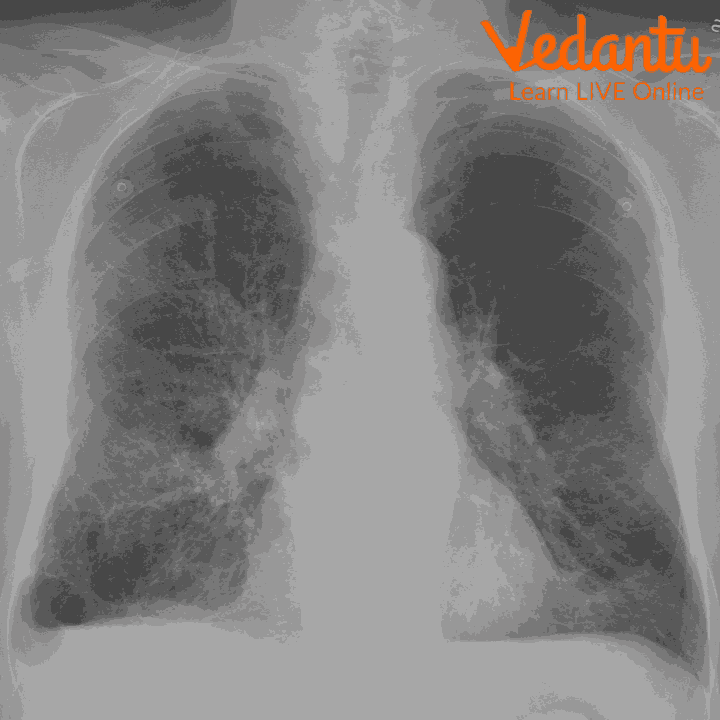
Chest x-ray
Discovery of X-rays
In 1895, a German physicist Wilhelm Rontgen discovered x-rays accidentally when he was testing whether cathode rays can pass through glass. The cathode tube was covered in heavy paper which was of black colour so he got surprised when he observed that an incandescent green coloured light escaped and projected on a nearby screen. Through experiments he found that the unknown light could pass through most substances and leave shadows of solid objects. He did not know what these rays were, so he named them ‘X’ meaning ‘unknown’ rays.
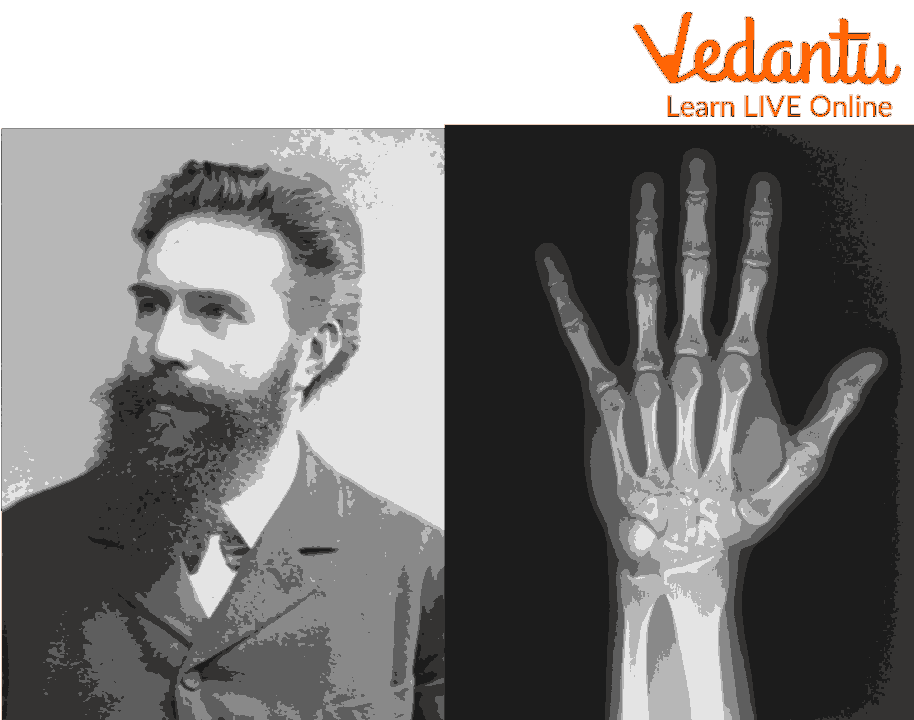
Wilhelm Rontgen - Physicist Who Discovered X-rays
Properties of X-rays
Let us discuss some properties of x-rays.
X-rays have very short wavelengths out of all from the electromagnetic spectrum.
These travel in a straight line and these do not carry an electric charge.
They do not require medium to travel; they can travel in vacuum.
They are highly penetrable.
These rays are diverging rays as they cannot be focused on a point.
How Do X-rays Work?
X-rays are produced when electrons of high velocity come to collide with the metal plates. During this process, they give out energy as x-rays and themselves are absorbed by the metal plate.
Firstly, the person is laid on an x-ray machine. The x-ray beam travels through the air and it comes in contact with the tissues of the body and then it produces an image on a metal film.
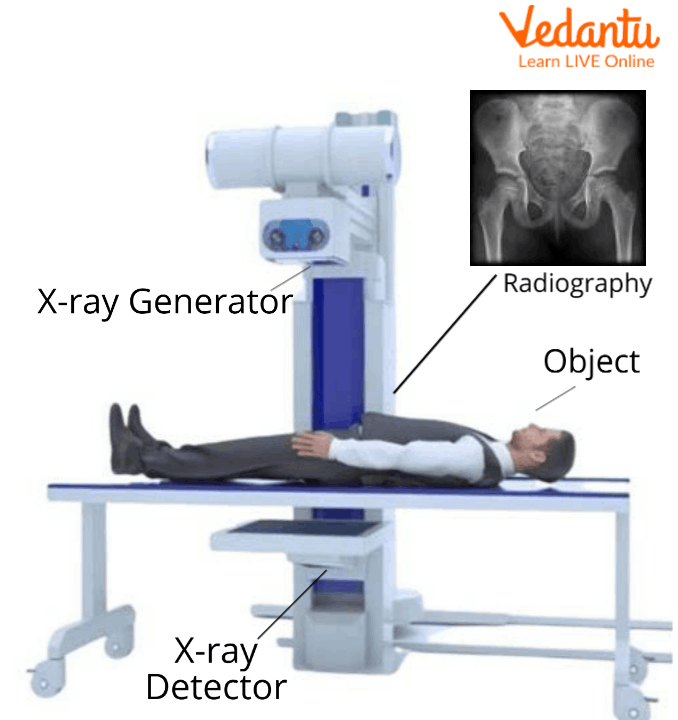
X-ray Machine
Soft tissues of the body like organs and skin cannot absorb the high velocity rays and the beam passes through them.
There are dense materials present inside our body for example bones, they can absorb the radiations of x-rays.
In the areas which are exposed to x-rays, they develop a film called x-rays film. White areas in the film show denser regions of the body for example bones which absorb x-rays and black areas on an x-ray show the soft tissues from which x-rays have not passed.
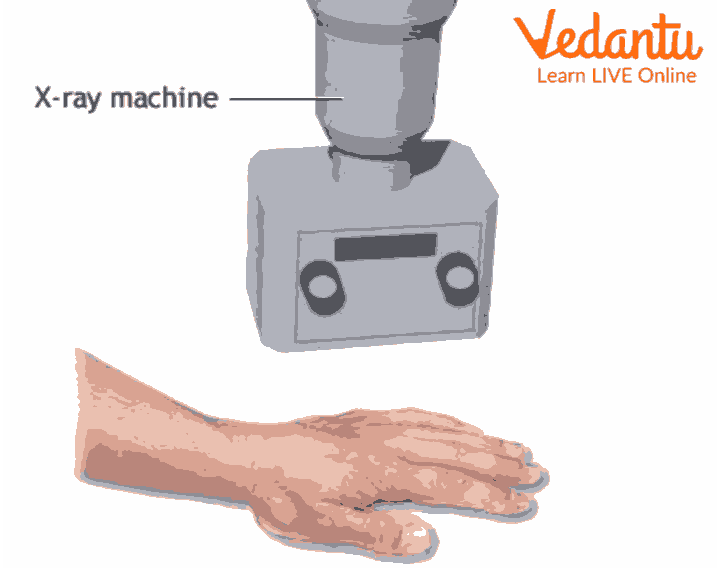
Exposure to x-rays
Uses of X-rays
X-rays have many uses. Some of these uses are listed:
Medical uses of x rays include detection of any breakage in bones of humans.
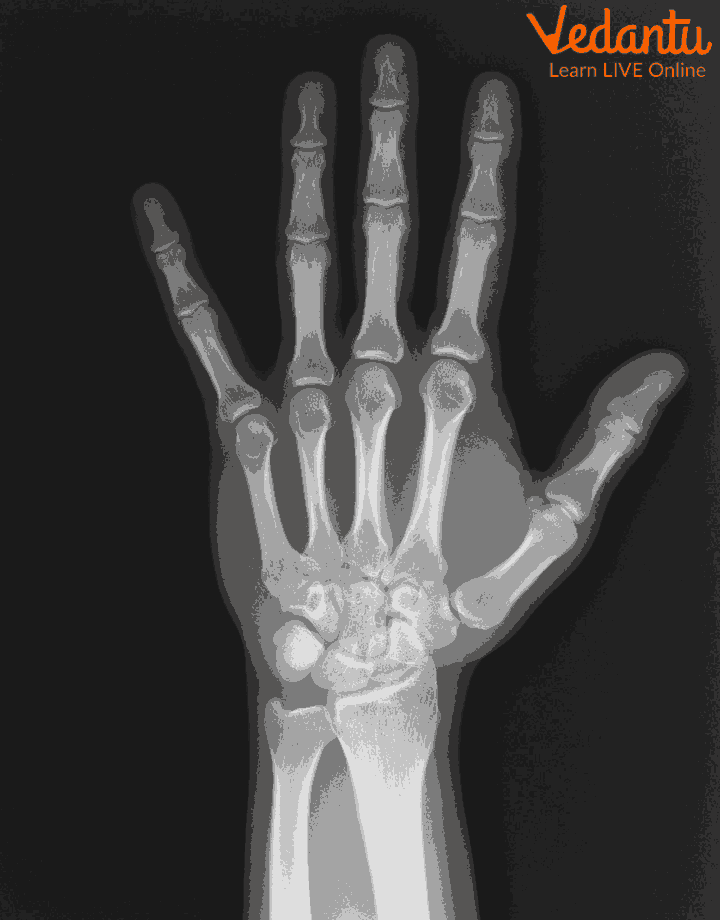
Bone x-ray
They work as scanners to scan the luggage of passengers in airports, rail terminals and many other places for security checking.
X-rays are emitted by celestial objects and are used to study and understand the environment.
It has industrial purposes also that is to detect any defects in the welds.
These are also used to restore old paintings.
Fun Facts About x-rays
Let us learn some xray facts for kids
In 1901, Wilhelm Roentgen's discovery earned him the Physics Nobel Prize.
The innovation of Wilhelm's spouse did not impress Wilhelm's wife. She spoke the words "I have seen my death" after witnessing the picture of her hand.
The invention of the X-ray by Wilhelm, who wanted everyone to profit from its use, resulted in several medical advancements.
The terms "X-ray" and "image" both describe the process used to obtain the image.
There are several variations to spell X-ray, including xray, X ray, X-ray, and x-ray.
Sample Questions
1. What are the most common types of x-rays?
Ans: The most common types of x-rays are chest x-rays, bone x-rays, hand x-rays, joint x-rays, dental x-rays and many more.
2. Why do x-rays take so long?
Ans: X-rays take a long time because we need to angle the body in different positions to see the different parts of the bones and joint spaces etc.
3. How many x-rays can you have in your lifetime?
Ans: An average healthy human can have as many x-rays as possible in his or her lifetime.
Summary
X-rays are radiations which have very short wavelengths and can be used to take pictures of the internal organs of the body. X-rays are used in many ways but the most important use of them is in the medical field as they are used to detect defects in internal organs for example bone x-rays can be performed to check fractures. Radiations have some limitations also as their high dosage causes cancer.
FAQs on How Do X-rays Work?
1. What precautions are taken when using x-rays?
During x-ray exposure one should wear a lead apron and lead gloves and avoid the direct rays and should stand away from the x-ray tube.
2. Is an empty stomach required for x-ray?
Yes, empty stomach is required during stomach x-rays but not in other x-rays because during stomach x-ray, if there would be food in stomach some conditions may be hidden by food.
3. How long does x-rays last in the body?
For about 10 days, x-rays can last in the body as the amount of radiation from one adult chest x-ray is about the same as 10 days of natural background radiation that we all are exposed to.
4. What is the effect of a high dose of x-rays on the body?
High doses of x-rays can cause some diseases like skin cancer. Its high dosage can damage the DNA in the cells and lead to changes in DNA present in the cells.
5. What food should be avoided after radiation?
The food that should be avoided after exposure to radiation include raw vegetables and fruits, and other hard dry food such as chips. Also, salty, spicy and acidic foods should be avoided.









